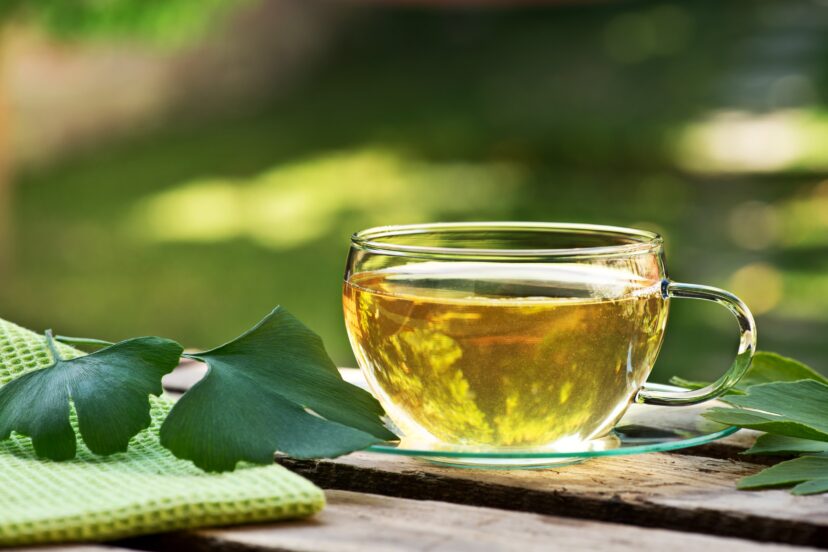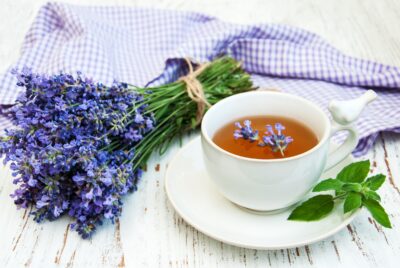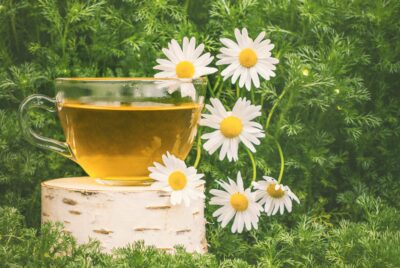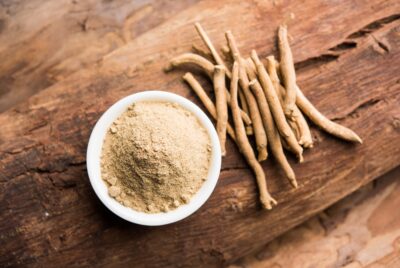Gingko Biloba Tea: The Ultimate Guide
Ever wondered about the healing powers of ancient herbs? Gingko Biloba, often called the “living fossil,” has been cherished for centuries for its medicinal properties. When brewed into tea, this fascinating plant offers a unique herbal experience that is both calming and invigorating. In this guide, we’ll explore everything you need to know about Gingko Biloba tea, from its health benefits to how to brew it, types, tasting notes, and even delicious recipes to try at home. So, let’s dive in!
Health Benefits
Gingko Biloba tea is packed with a variety of health benefits. Here’s a closer look:
Health Benefits
- Cognitive Enhancement: One of the most well-known benefits of Gingko Biloba is its positive effect on brain function. The tea is often used to improve memory, concentration, and overall mental performance. It’s a popular choice for those looking to enhance cognitive clarity.
- Cardiovascular Health: Gingko Biloba tea is believed to promote better blood circulation. It supports healthy blood flow, which can help reduce the risk of cardiovascular issues like hypertension and stroke.
- Antioxidant-Rich: Loaded with flavonoids and terpenoids, Gingko Biloba tea is rich in antioxidants. These compounds help protect your cells from oxidative stress, which can slow down aging and boost overall immunity.
- Weight Loss Aid: While not a direct fat burner, Gingko Biloba tea can support weight management by improving energy metabolism and reducing stress, which is often linked to weight gain.
- Anti-Inflammatory: Regular consumption of Gingko Biloba tea may help reduce inflammation in the body, which is beneficial for conditions like arthritis and other chronic inflammatory diseases.
Risks and Side Effects
- Mild Side Effects: Some people may experience mild digestive issues or headaches, especially if consumed in large amounts. Start with a small cup and gradually increase your intake.
- Blood Thinning: Gingko Biloba has mild blood-thinning properties, which can interfere with blood clotting medications. If you’re on medication or have a bleeding disorder, consult a healthcare provider before adding this tea to your routine.
- Allergic Reactions: Though rare, some individuals may be allergic to Gingko Biloba. If you have a known allergy to plants like poison ivy or sumac, exercise caution.
How to Brew Gingko Biloba Tea
Brewing the perfect cup of Gingko Biloba tea is an art in itself. Here’s how to do it:
Ingredients
- 1-2 teaspoons dried Gingko Biloba leaves or 1 tea bag
- 8 oz (240 ml) of hot water (not boiling, around 175°F/80°C)
- Optional: honey, lemon, or ginger
Instructions
- Heat the water to around 175°F (80°C). Boiling water can make the tea bitter.
- Place the dried leaves or tea bag into a teapot or mug.
- Pour the hot water over the leaves and steep for 3-5 minutes.
- Strain the steeped leaves, or if using a tea bag, remove it.
- Add honey, lemon, or ginger if you prefer a sweeter or spicier taste.
- Enjoy the tea while it’s warm!
Tip: For a more intense flavor, increase the steeping time, but don’t exceed 7 minutes to avoid bitterness.
Types and Varieties
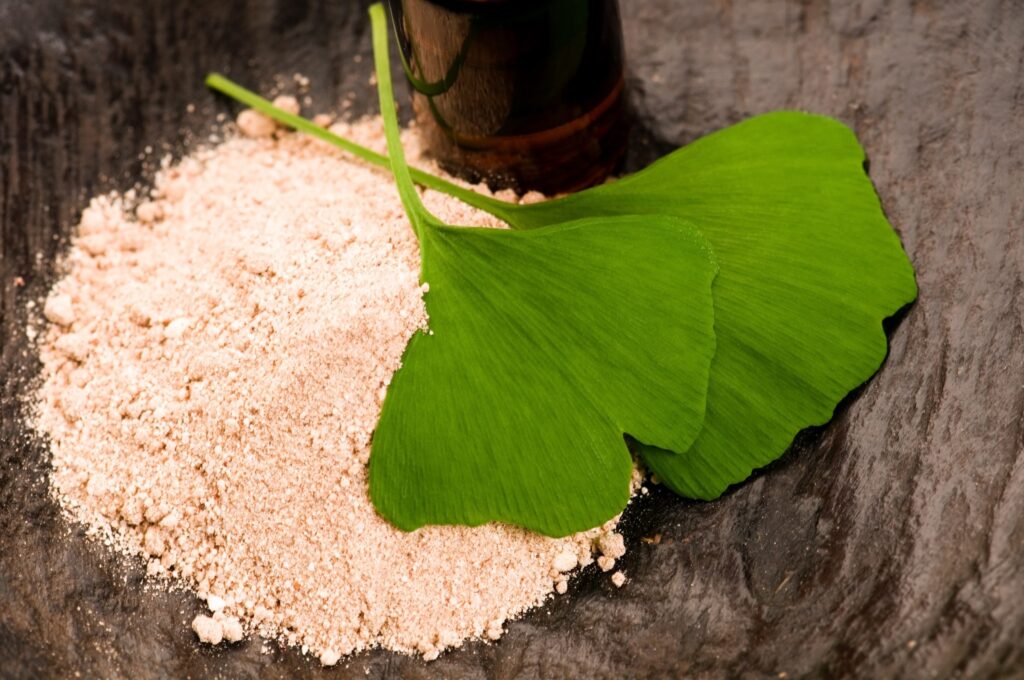
While Gingko Biloba tea is often associated with dried leaves, it comes in several varieties:
- Loose Leaf Tea: The most traditional form, offering a more robust flavor and aroma.
- Tea Bags: Convenient and widely available, tea bags provide a milder taste.
- Blended Teas: Gingko Biloba is sometimes combined with other herbs like ginseng, lemongrass, or peppermint to create unique blends that enhance its benefits.
- Powdered Tea: Gingko Biloba is also available in powdered form, which can be mixed into warm water or smoothies for a different experience.
Flavor Profiles and Tasting Notes
Gingko Biloba tea has a mild, earthy flavor with slightly nutty undertones. It’s often described as refreshing yet grounding. You may also notice hints of bittersweetness, reminiscent of green tea but with a less pronounced astringency. Adding honey or lemon can enhance its natural flavors, making it a more enjoyable drink for beginners.
Where and How Gingko Biloba Tea is Grown
Gingko Biloba trees are native to China but are now cultivated in parts of Japan, Korea, and the United States. The trees thrive in temperate climates and can grow up to 100 feet tall. The leaves are typically harvested in late summer or early autumn when they reach their peak potency. Once picked, they’re dried and processed into tea.
Pairing with Food
Gingko Biloba tea pairs well with light, savory dishes like:
- Grilled fish or chicken: The mild flavor complements the tea’s earthiness.
- Salads with citrus dressing: The citrus tang balances the nutty undertones of the tea.
- Nut-based desserts: Think almond cookies or pistachio biscotti, which enhance the tea’s natural flavors.
2x Recipes Using Gingko Biloba Tea
1. Gingko Biloba Tea Smoothie
Category: Beverages
Serves: 2
Prep Time: 5 minutes
Description: A refreshing and energizing smoothie that blends the cognitive benefits of Gingko Biloba with fruits and greens.
Ingredients:
- 1 cup brewed and cooled Gingko Biloba tea
- 1 banana, frozen
- 1 cup spinach leaves
- 1 tbsp honey or maple syrup
- ½ cup yogurt
Instructions:
- Blend all ingredients until smooth.
- Serve chilled.
Nutrition per Serving:
Calories: 120, Protein: 3g, Carbs: 25g, Fat: 1g
Tips: Add a handful of ice for a colder drink.
2. Gingko Biloba Infused Rice
Category: Side Dish
Serves: 4
Prep Time: 10 minutes
Cook Time: 25 minutes
Description: An aromatic side dish infused with the earthy notes of Gingko Biloba, making it a delightful addition to Asian meals.
Ingredients:
- 2 cups rice
- 3 cups brewed Gingko Biloba tea
- 1 tbsp sesame oil
- 1 pinch of salt
Instructions:
- Rinse rice and place in a pot with Gingko Biloba tea.
- Add salt and sesame oil, then bring to a boil.
- Reduce heat and simmer for 20-25 minutes.
- Fluff rice with a fork and serve.
Nutrition per Serving:
Calories: 210, Protein: 4g, Carbs: 45g, Fat: 3g
Tips: Pair with grilled vegetables or tofu for a complete meal.
Accessories and Equipment
To fully enjoy Gingko Biloba tea, consider these tools:
- Teapot with Infuser: Essential for loose-leaf brewing.
- Tea Kettle with Temperature Control: Ensures the correct water temperature.
- Tea Strainer: Handy for filtering leaves.
- Thermos or Travel Mug: Ideal for keeping the tea warm on the go.
Wellness Practices
Gingko Biloba tea is often used in mindfulness practices. Sipping it slowly can be a form of meditation, helping you center your thoughts. You can also use it as part of a detox regimen, aiding in mental and physical rejuvenation.
Sustainability and Ethical Sourcing of Gingko Biloba Tea
Opt for Gingko Biloba tea that’s sustainably sourced. Fair trade certifications ensure that workers are fairly compensated, and organic farming methods promote biodiversity and soil health.
Storage and Preservation
- Store in an airtight container away from direct sunlight.
- Keep in a cool, dry place to keep it fresh.
- Avoid moisture as it can degrade the tea’s quality.
5 Unique Tips for Gingko Biloba Tea
1. Try Cold-Brewing Gingko Biloba Tea for a Refreshing Summer Drink
Cold-brewing Gingko Biloba tea offers a different flavor profile compared to traditional hot brewing. It’s a great way to enjoy the tea during warm weather, as cold brewing tends to produce a smoother, less bitter flavor with enhanced sweetness.
- How to Cold-Brew:
- Use 2-3 teaspoons of dried Gingko Biloba leaves or 2 tea bags for every 1 liter (34 oz) of cold, filtered water.
- Place the leaves or tea bags in a pitcher or jar, then add the cold water.
- Seal the container and refrigerate for 8-12 hours, depending on how strong you want the flavor to be.
- Strain the leaves or remove the tea bags before serving over ice.
- Flavor Enhancements: Add slices of citrus fruits like lemon or orange, cucumber slices, or fresh mint leaves before refrigerating to infuse the tea with a light, refreshing twist.
- Why This Works: Cold brewing helps release the tea’s subtle flavors slowly, minimizing any potential bitterness and making the tea more palatable for beginners or those who find the earthy taste of hot-brewed Gingko Biloba a bit too strong.
2. Combine It with Green Tea for an Extra Boost of Antioxidants
Blending Gingko Biloba tea with green tea creates a powerful combination that offers enhanced health benefits, particularly in terms of antioxidant intake and cognitive support.
- How to Blend:
- Use equal parts of Gingko Biloba leaves and green tea leaves (e.g., 1 teaspoon each) for a balanced cup.
- Brew as you would normally for either tea: Use water heated to around 175°F (80°C) and steep for 3-4 minutes.
- Adjust steeping times if you prefer a stronger flavor, but don’t exceed 5 minutes to avoid bitterness.
- Health Benefits: Green tea is rich in catechins, which work synergistically with Gingko Biloba’s flavonoids to boost brain function, metabolism, and immune system health. This blend is ideal for mid-morning energy or as a mental pick-me-up in the afternoon.
- Flavor Profile: Green tea’s grassy, mildly sweet notes blend well with the earthy, slightly nutty flavor of Gingko Biloba, resulting in a well-rounded, more flavorful cup.
3. Add Fresh Mint Leaves During Brewing for a Cooling Effect
Mint not only complements the flavor of Gingko Biloba but also adds a cooling, refreshing sensation, making it perfect for both hot and cold preparations.
- How to Do It:
- Add 4-5 fresh mint leaves to your Gingko Biloba tea while steeping. Use the same water temperature and steeping time as usual.
- If you’re cold-brewing, add a small handful of mint leaves to the cold water along with the tea leaves for a subtle infusion.
- Health Benefits: Mint aids in digestion, relieves stress, and enhances alertness. Combined with Gingko Biloba, it can create a tea blend that not only refreshes but also sharpens mental focus.
- Flavor Enhancements: Mint leaves balance out the natural bitterness of Gingko Biloba, adding a crisp, sweet edge to the tea. It’s also a great palate cleanser, making it an excellent choice after meals or as a part of a detox routine.
4. Use Gingko Biloba Tea in Soups for an Earthy Twist
Gingko Biloba tea isn’t limited to beverages; it can be a creative ingredient in cooking, especially in soups. The tea’s mild, earthy flavor can enhance the umami notes of savory dishes.
- How to Incorporate:
- Prepare a concentrated batch of Gingko Biloba tea by using twice the amount of leaves and steeping for 6-8 minutes.
- Use this concentrated tea as part of the broth base for vegetable, chicken, or mushroom soups.
- For an Asian-inspired dish, add the tea to miso soup or ramen broth for a unique, herbal layer of flavor.
- Why This Works: Gingko Biloba’s earthy and slightly nutty taste complements savory ingredients like mushrooms, garlic, and soy sauce. It adds depth to broths, enhancing the flavors without overpowering them.
- Health Benefits: When used in soups, Gingko Biloba tea retains its antioxidant and circulation-boosting properties, adding a subtle health benefit to your meal.
5. Pair It with Dark Chocolate for a Delightful Flavor Combo
If you’re a fan of pairing tea with sweet treats, try matching Gingko Biloba tea with dark chocolate. The bitter-sweet contrast creates a surprisingly harmonious combination.
- Why Dark Chocolate?
- Dark chocolate has its own array of health benefits, such as being rich in antioxidants, magnesium, and mood-enhancing properties.
- The bittersweet and creamy notes of dark chocolate pair well with the earthy, nutty taste of Gingko Biloba, creating a balance of flavors that’s both satisfying and rich.
- How to Enjoy:
- Brew a warm cup of Gingko Biloba tea, preferably a stronger batch (steep for 5-6 minutes).
- Sip the tea slowly while enjoying small bites of dark chocolate (at least 70% cocoa) to fully appreciate the interplay of flavors.
- Alternatively, you can make a Gingko Biloba tea-infused hot chocolate by using brewed tea instead of water or milk, adding a teaspoon of cocoa powder, and sweetening it with honey.
- Why This Works: Dark chocolate’s complex flavors bring out the natural bittersweet notes in Gingko Biloba, making for a delightful sensory experience that’s both warming and comforting.
Whether you’re making cold-brew, infusing it into soups, or pairing it with chocolate, these tips aim to elevate your tea-drinking experience.
A Comparison with Other Teas
Ashwagandha Tea
- Common Ground: Both Ginkgo Biloba and Ashwagandha teas are used in traditional medicine for their adaptogenic and stress-relieving properties. They can contribute to better mental health by reducing stress and enhancing focus.
- Differences: Ashwagandha tea is more rooted in its adaptogenic effects, helping the body manage stress and promote relaxation. Ginkgo Biloba tea is better known for its benefits related to memory enhancement and improved blood circulation.
Blue Lotus Tea
- Common Ground: Both Ginkgo Biloba and Blue Lotus teas are used for relaxation and mental well-being. They are both caffeine-free and have historical significance in traditional medicine.
- Differences: Blue Lotus tea is known for its sedative and mildly psychoactive properties, promoting relaxation and even slight euphoria. Ginkgo Biloba tea is more subtle in its effects, focusing on improving cognitive function and circulation rather than inducing a calming, almost hypnotic state.
Genmaicha Tea
- Common Ground: Genmaicha tea and Ginkgo Biloba tea both have earthy, toasty flavors that may appeal to those who enjoy complex, unique tastes. Both teas also contain antioxidants that help combat oxidative stress.
- Differences: Genmaicha is a blend of green tea and roasted brown rice, which means it contains caffeine and has a distinctive nutty, roasted flavor profile. Ginkgo Biloba tea is purely herbal, caffeine-free, and has a more straightforward, earthy taste. Genmaicha is typically consumed for its energy-boosting and calming effects, while Ginkgo Biloba is taken for cognitive support and circulatory health.
Sencha Tea
- Common Ground: Both Ginkgo Biloba and Sencha teas are known for their rich antioxidant content, which can help combat oxidative stress and promote general wellness.
- Differences: Sencha, a type of Japanese green tea, is rich in catechins and contains caffeine, which provides an energizing effect and supports metabolism. It has a grassy, slightly sweet flavor profile, unlike Ginkgo Biloba tea, which is earthy, caffeine-free, and more focused on cognitive enhancement and circulation.
Jasmine Green Tea
- Common Ground: Both Jasmine Green tea and Ginkgo Biloba tea have antioxidant properties that promote well-being and may aid in reducing oxidative stress.
- Differences: Jasmine Green tea is green tea infused with jasmine blossoms, offering a fragrant, floral aroma and a mild, sweet taste. It contains caffeine and is enjoyed for its uplifting effects. Ginkgo Biloba tea is less aromatic, has no caffeine, and is more focused on enhancing blood flow and cognitive health rather than providing an energy boost.
Jasmine Tea
- Common Ground: Like Ginkgo Biloba tea, jasmine tea is often used for relaxation and mental well-being due to its soothing properties and delightful aroma.
- Differences: Jasmine tea is typically made by infusing either green, white, or black tea with jasmine flowers. It has a floral, sweet flavor and may contain caffeine, depending on the base tea used. Ginkgo Biloba tea, however, is caffeine-free, has an earthy flavor, and its primary benefits are centered around cognitive enhancement and improved blood circulation.
These comparisons show that while Ginkgo Biloba tea shares some health properties such as antioxidant content with other teas, its unique benefits, caffeine-free nature, and distinct earthy taste set it apart from these other popular teas.
Final Thoughts
Gingko Biloba tea offers a fascinating blend of health benefits, unique flavors, and wellness potential. Whether you’re looking to improve focus, enhance circulation, or simply try a new herbal tea, Gingko Biloba is worth exploring. From brewing to recipes, this tea invites you to enjoy a moment of peace and clarity.
FAQs
Is Gingko Biloba tea safe for daily consumption?
Yes, but start with small amounts and consult a healthcare provider if you have concerns.
Can Gingko Biloba tea improve memory?
It may help enhance memory and focus due to its antioxidant and circulatory benefits.
What does Gingko Biloba tea taste like?
It has an earthy, slightly nutty flavor with hints of bitterness.
How long can I store Gingko Biloba tea?
If stored properly in a cool, dry place, it can last up to a year.
Can I drink Gingko Biloba tea before bed?
Yes, but be mindful of its energizing properties, which may affect sleep for some people.

